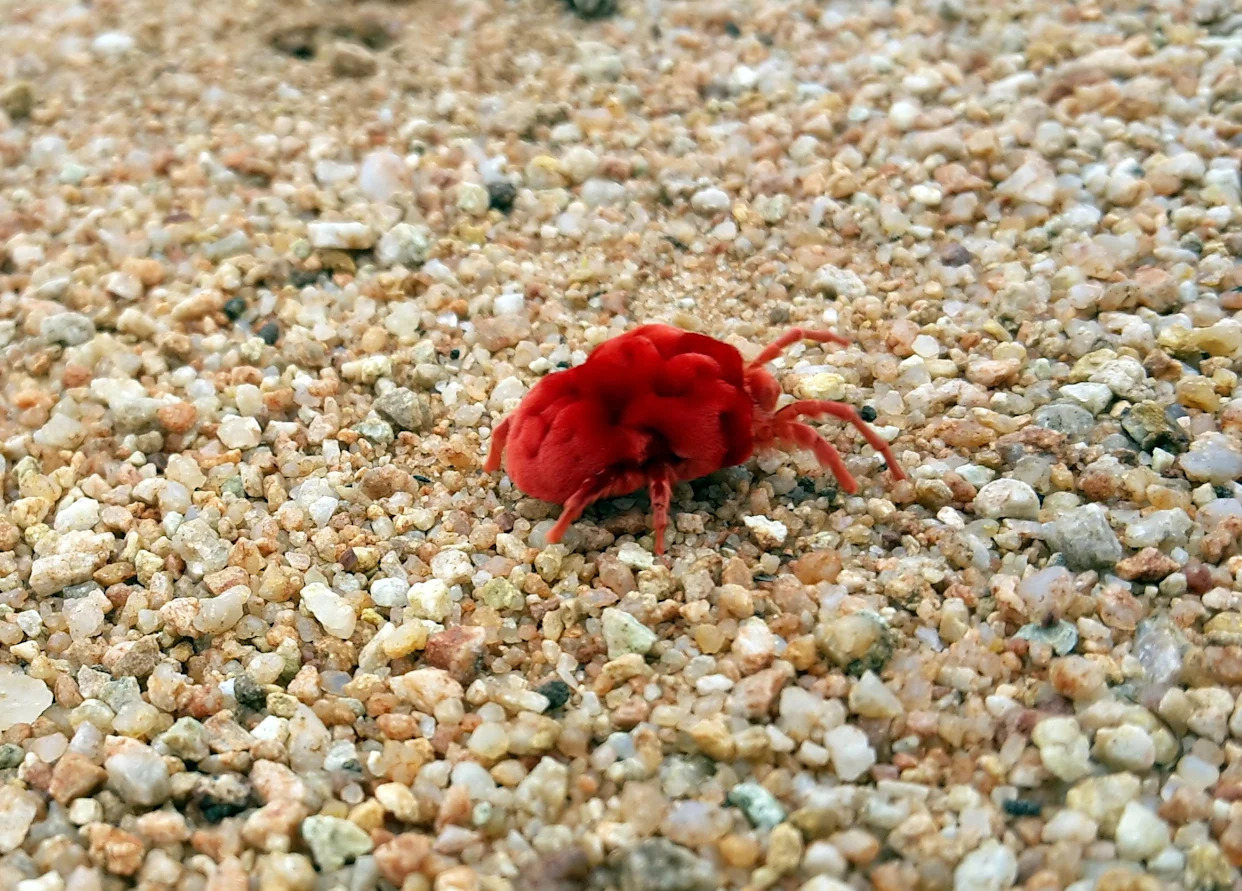
Anyone who's spent a few summers outside knows to watch out for ticks, but a smaller yet equally annoying creature will also latch on tight during a walk through the tall grass.
A bright-red mite called trombiculidae, better known in the United States as chiggers, are a common nuisance in the warmer months.
Here's how to identify the pest and what to do if you are bitten.
Chiggers are found nearly everywhere humans live
Although chiggers can be found in most climates around the world, they're most prevalent where it's hot and humid.
In the United States, they're often a problem in the Midwest and southern areas.
According to the Oklahoma State University Extension Office, chiggers are found in meadows, areas of grassy or scrubby vegetation, shaded areas and places where leaves and rotting logs accumulate.
Its common name is believed to be influenced by the "chigoe," the name of a biting flea common in South America, or by words used to describe an insect in some African languages.
How to identify a chigger
Chiggers are distinctive for their brightly colored red body.
In the larval stage they're also tiny -- nearly microscopic -- but can be spotted with enough light and a sharp eye. Chiggers are more easily spotted on the skin when they're moving, but they fall off after feeding.
Once they become adults, chiggers grow to be significantly larger. Thankfully for humans, they remain on the ground while gobbling up organic matter like plants.
More: Oklahoma is home to several venomous snake species. How to spot them, what to do
Chigger bites cause inflammation, redness
After hatching from an egg, the chigger is a larval mite that seeks out animals to feed on, including humans. Their meal of choice in at this phase is skin cells.
While they're feeding, chiggers inject digestive enzymes into the skin. This breaks down skin cells but also causes localized irritation, redness, welts and itching. They do not burrow into the skin.
The bite itself isn't painful and there is a very low risk to humans. Make sure, however, to avoid creating an open wound by excessive scratching.
How to prevent and treat chigger bites
Dr. Justin Talley, head of the Oklahoma State University Department of Entomology and Plant Pathology, said in 2023 that some insect repellants can deter chiggers.
Talley said products containing DEET, picaridin or IR3535 are useful if they're applied to the skin. When checking for bites, he recommends checking anywhere with tight clothing like waistlines inside socks.
Irritation from bites can be treated with common antihistamines or creams that relieve itching and redness.
This article originally appeared on Oklahoman: What does a chigger look like? How to identify, prevent Oklahoma pest








Comments